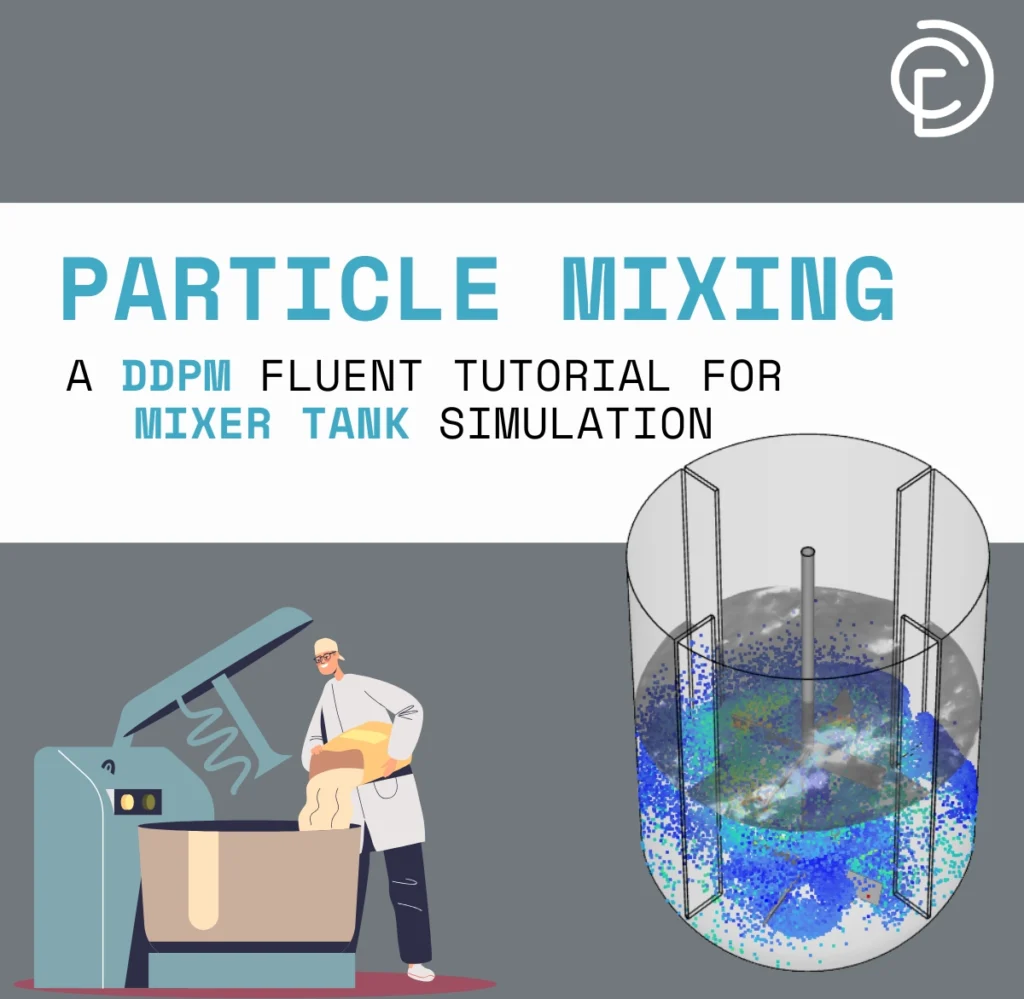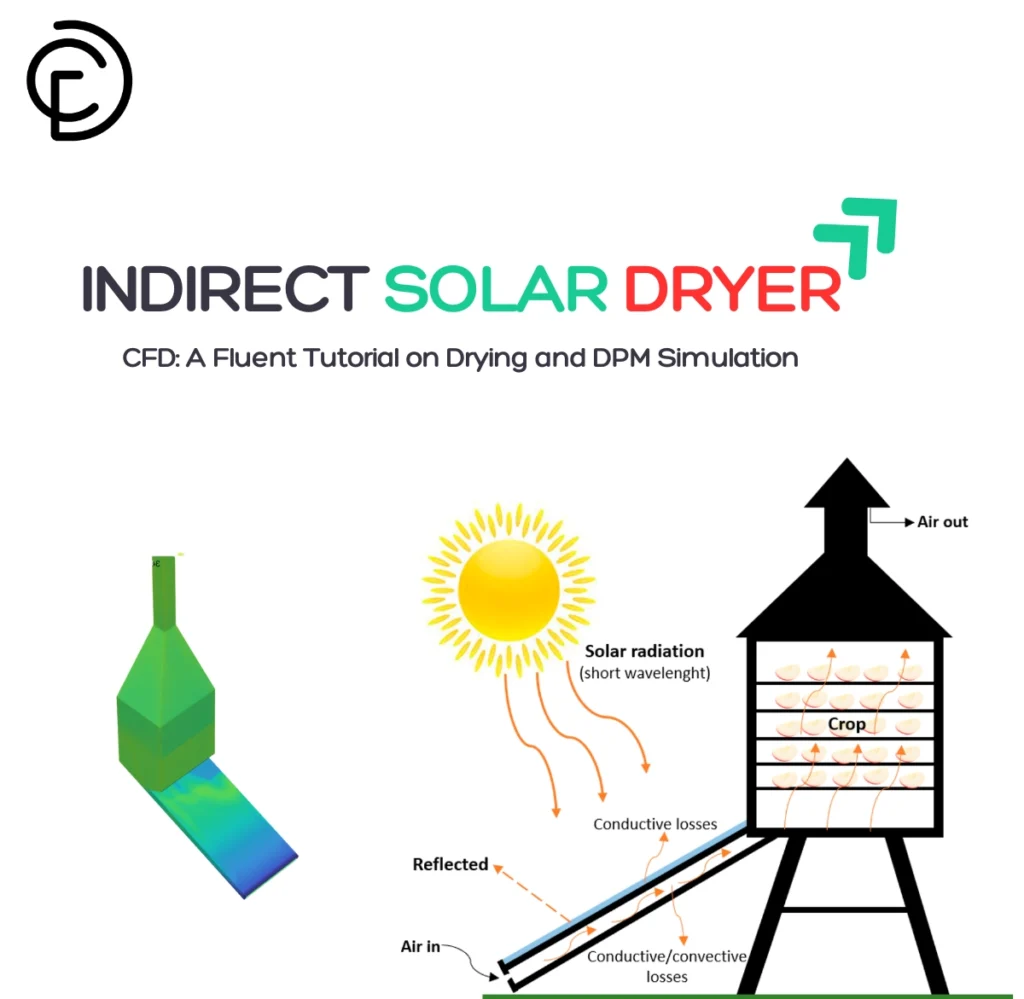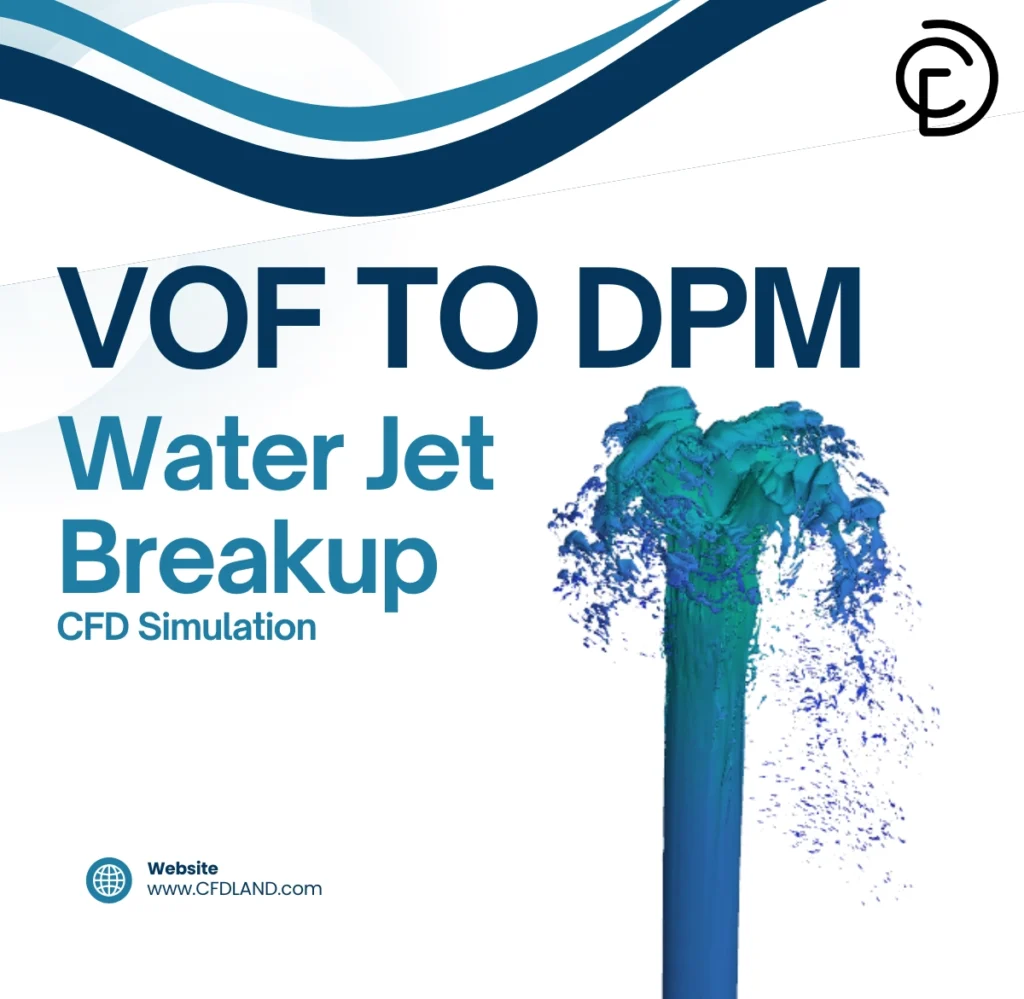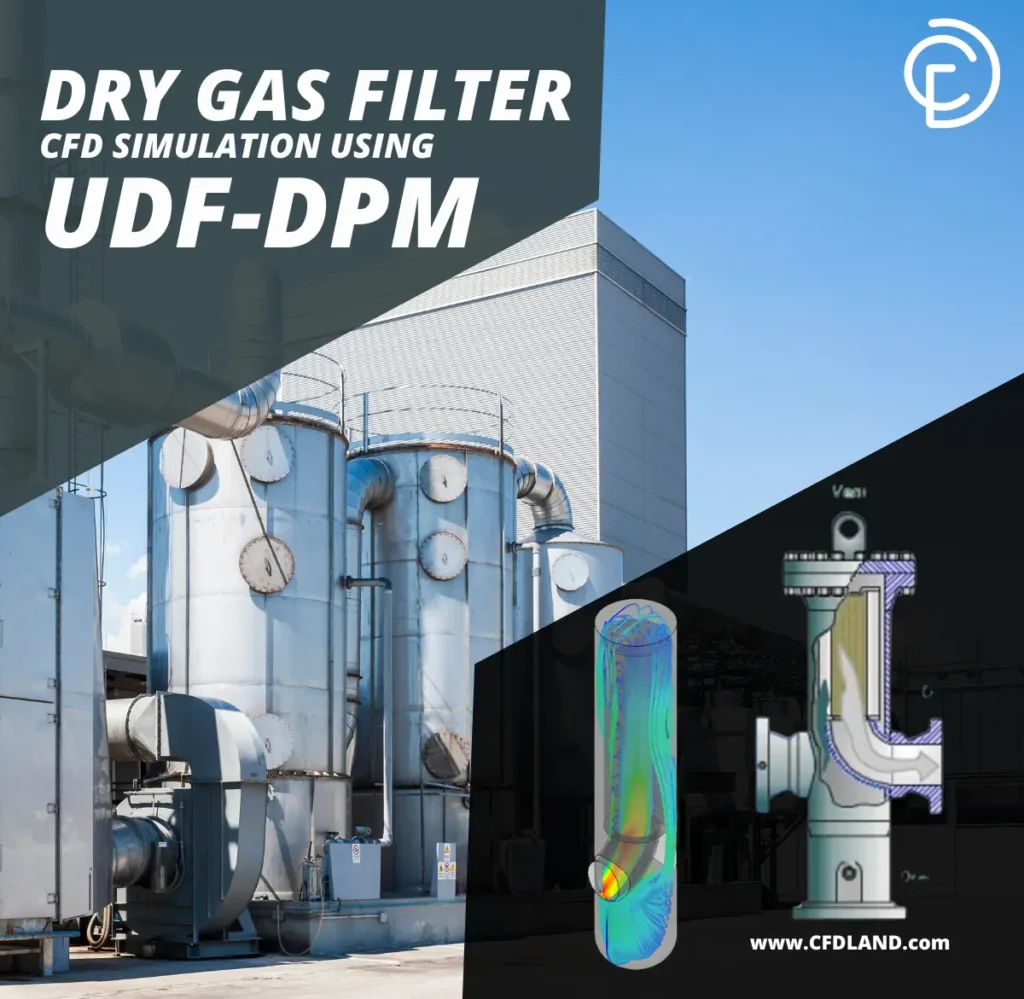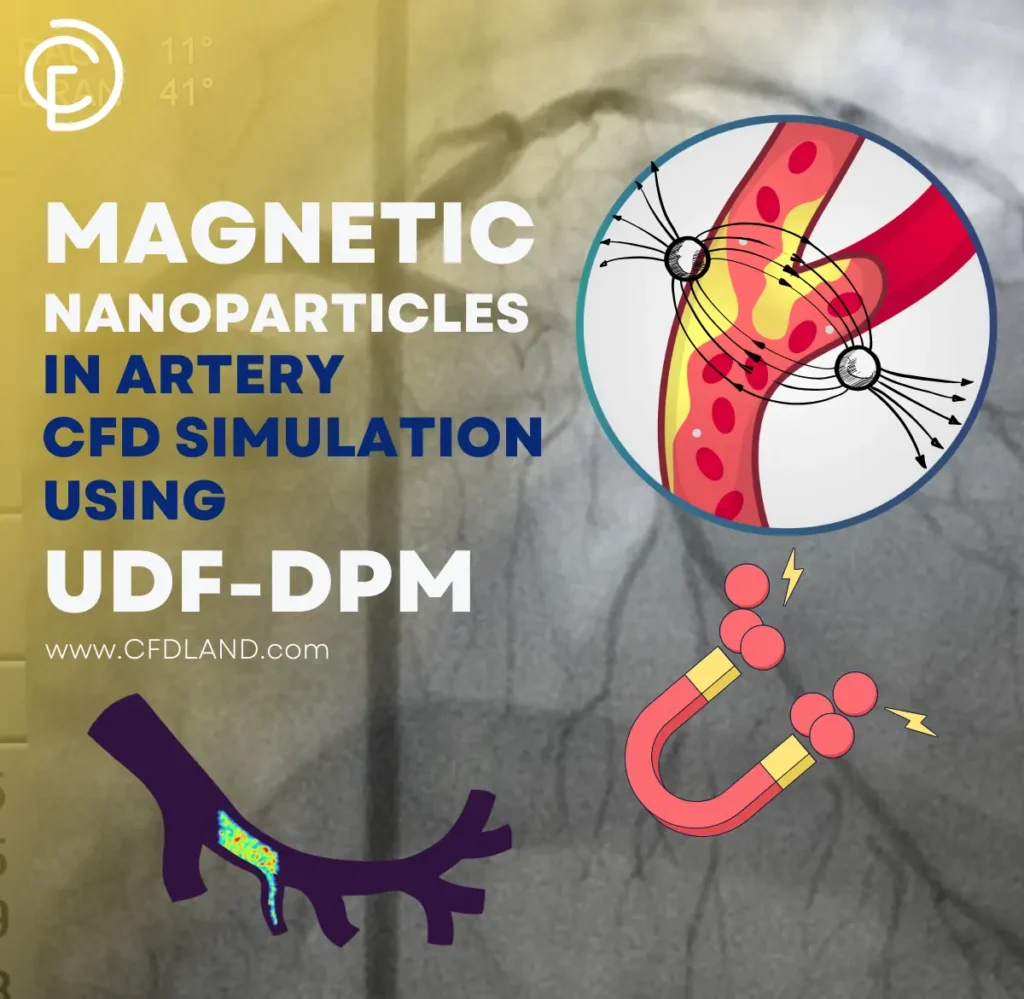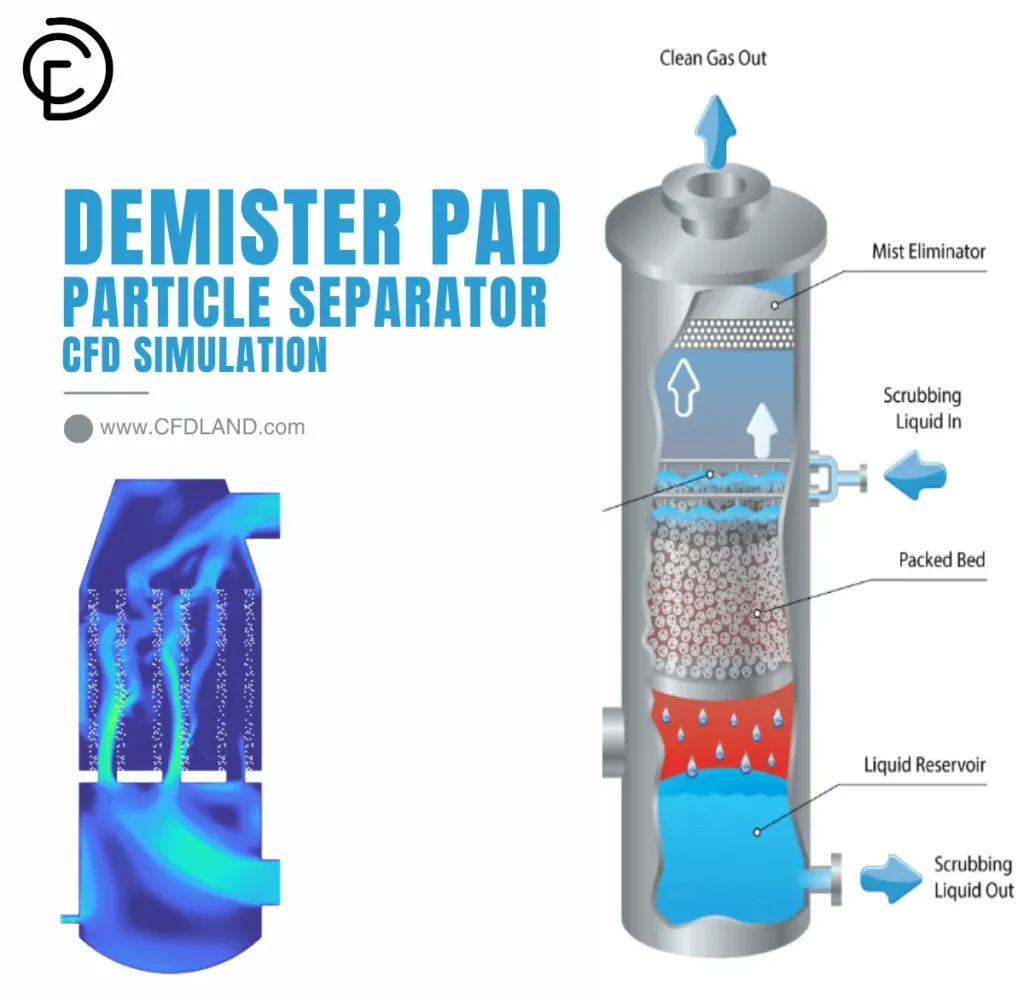DPM CFD Simulation
€235 Original price was: €235.€165Current price is: €165.
€185 Original price was: €185.€135Current price is: €135.
€215 Original price was: €215.€165Current price is: €165.
€205 Original price was: €205.€175Current price is: €175.
€230 Original price was: €230.€185Current price is: €185.
€180 Original price was: €180.€165Current price is: €165.
What is the Discrete Phase Model (DPM)?
The Discrete Phase Model (DPM) is an appropriate method for simulating specific multiphase flows, such as modeling liquid droplets in a gas or gas bubbles in a liquid, as well as inert particles in either a gas or a liquid. The DPM treats the simulation as a system with two distinct phases. The study of multiphase systems with DPM ANSYS Fluent simulations has been used by engineers in many projects.

The movement of gas bubbles in the air, it is possible to simulate this phenomenon with DPM
In the DPM Fluent simulations, the secondary phase, which comprises particles, bubbles, or droplets, is typically modeled as sources and sinks of mass, energy, and momentum within the main fluid flow. The Navier-Stokes equations are then solved only for the primary phase, representing the continuous fluid. This simplification allows for more efficient computation by focusing computational resources on the primary phase while still capturing the influence of the dispersed phase on the overall flow behavior.
Discrete Phase Vs. Multiphase
Distinguishing between the Discrete Phase Model and multiphase flow modeling is crucial. Some may think discrete phase is not related to multiphase flow. However, both approaches address systems with multiple phases (solid, liquid, gas). In fact, the DPM tracks discrete particles within a continuous fluid, employing a Lagrangian framework, which will be described in the next section. In brief, there are two approaches to multiphase flow modeling:
- Eulerian-Eulerian: This approach considers all phases as continuous, solving the governing equations (Navier-Stokes) for each phase simultaneously.
- Eulerian-Lagrangian: A hybrid method that combines aspects of both Eulerian and Lagrangian approaches. This allows for tracking the dispersed phase in the continuous phase more accurately.
The choice between Eulerian-Eulerian or Eulerian-Lagrangian techniques often depends on the problem nature, the volume fraction of the discrete phase, and the interactions between phases that need to be considered.
Discrete Phase Model Volume Fraction
Speaking of volume fraction of discrete phase and its effect on adopting proper multiphase approach, the volume fraction of the discrete phase is a critical parameter in DPM simulations. It shows the ratio of the discrete particle occupancy to the overall fluid volume. Practical applications depend on keeping an acceptable volume fraction (usually less than 10%) to guarantee that the discrete phase does not greatly change the flow characteristics of the continuous phase.
When the volume fraction of the discrete phase is low, the DPM simplifies by allowing the assumption that particles do not interact with each other. On the other hand, as the volume fraction rises, one has to include the interactions between particles and their impact on the continuous phase.
Lagrangian Approach in DPM
The DPM operates within the Lagrangian frame to track particle motion, while an Eulerian formulation represents the continuous phase. This method accounts for various forces affecting particle trajectories, such as viscous drag, lift force, and buoyancy, while also incorporating fluid flow behavior. Understanding this issue is very important in ANSYS Fluent DPM simulation.
In fluid mechanics, the Lagrangian view tracks individual fluid particles’ trajectories over time, while the Eulerian approach observes properties like velocity and pressure at fixed points in space. Lagrangian methods focus on discrete particle dynamics, while Eulerian methods are used for continuum-based equations like the Navier-Stokes equations in computational fluid dynamics simulations. Each approach offers unique insights into fluid behavior.
When to use One-way, Two-way & Four-way DPM Coupling?
The Discrete Phase Model can be significantly simplified by neglecting interactions between particles, droplets, and bubbles, particularly when the volume of the discrete phase is relatively small (less than 10% Based on a thumbs-up rule) compared to the continuous phase despite having significant mass. In such cases, the computations for the continuous phase are iteratively repeated, while particle trajectories are individually calculated and established.
In certain scenarios in ANSYS DPM simulations, particles may have minimal influence on the fluid flow, prompting the use of a one-way coupling approach. Here, the fluid flow affects the particles, but not the other way around. However, for situations where particles significantly impact the flow, a two-way coupling approach is necessary for more precise simulations. It’s important to note that this method can be computationally expensive due to the increased complexity of interactions between the fluid and particles.
Although DPM provides detailed insights into particle behavior, it can become computationally expensive, particularly when handling numerous particles or accounting for particle-to-particle collisions (four-way coupling). Understanding the problem, choosing the appropriate settings and adjusting the software by the user for Ansys Fluent DPM simulations has a great effect in determining the amount of accuracy and computational cost.
What are Discrete Phase Model applications?
The DPM has a wide range of applications across various fields due to its ability to simulate the behavior of particles, droplets, or bubbles within a fluid flow. Here are some notable applications:
- Spray Dynamics: DPM is frequently utilized to simulate spray processes like fuel injection in combustion engines, spray coating in manufacturing, and agricultural pesticide application. CFD DPM simulation is a great way to study spray dynamics.

Water Mist Spray Nozzle Considering Evaporation Using 2-way DPM –Numerical Paper Validation
- Food Industry: It is adept at simulating the application of coatings or flavors onto food items through spraying. In an intriguing project, we coupled DPM and Matlab to simulate drying of grains that is necessary for storage. the humid must be evaporated during the drying process.
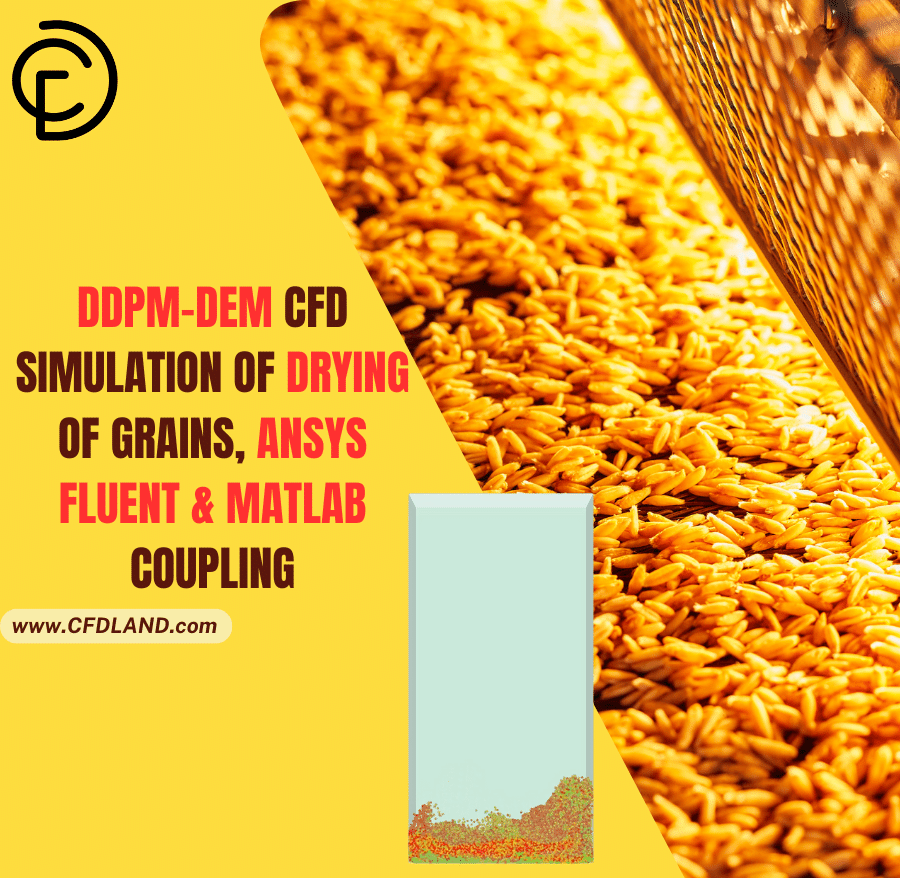
DDPM-DEM CFD Simulation of Drying of Grains, ANSYS Fluent & Matlab Coupling
- Cyclone Separators: DPM effectively models particle behavior within cyclone separators, enhancing separation efficiency and optimizing cyclone design by understanding particle inertia-based separation processes. CFD DPM simulation is a proper approach to design cyclone separators. You can find many cyclone separators in our CFD Shop. As an example, square cyclone separator with a laminarizer is simulated based on a valid reference paper, showing below:

Square Cyclone Separator With Laminarizer CFD Simulation, ANSYS Fluent Training
- Combustion Processes: DPM is integral to modeling combustion processes in various settings, such as coal and biomass combustion in power generation and waste incineration. In many industries, the combustion process has been optimized with CFD DPM simulation. For a precise tracking of fuel droplets, adopting DPM is essential. Likewise, we did the same thing in simulation of non-premixed combustion in the following product:

Non-premixed Combustion with Fuel Droplets Injection using DPM CFD Simulation, ANSYS Fluent Training
- Sedimentation & Erosion Studies: DPM provides insights into particle settling behavior in liquids, benefiting applications like water and wastewater treatment and analyzing slurry behavior. On the other hand, the presence of sediments generally results in erosion, which may lead to pernicious damage to many devices. Thanks to CFD DPM power, we can predict the critical regions and reinforce them, as we did in an air-cooled condenser.
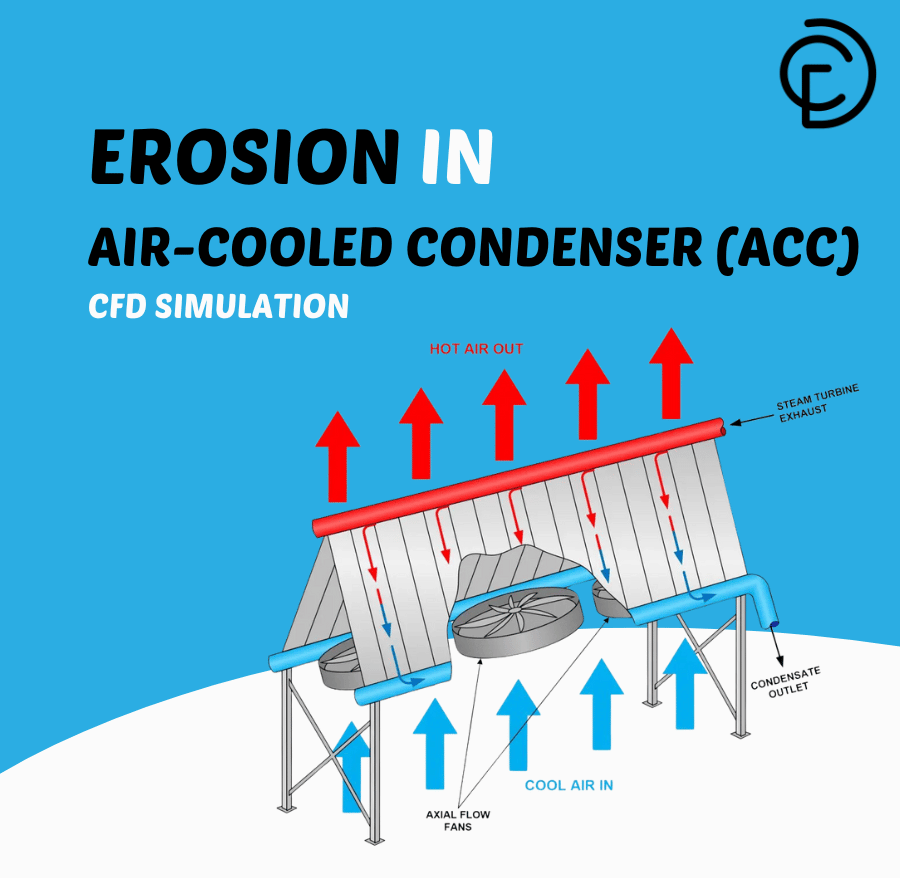
Erosion In Air-cooled Condenser (ACC) CFD Simulation, ANSYS Fluent Training
- Nanotechnology: DPM is instrumental in studying nanoparticle behavior in fluids, which is essential for applications like enhancing heat transfer and drug delivery
- Pharmaceuticals: DPM is applied to model aerosolized drug behavior in medical inhalers, facilitating pharmaceutical research and development. In such projects, the ability of DPM CFD simulations is shown.
- Aerospace: In aircraft engine design, DPM aids in modeling fuel injection and combustion processes for improved performance and efficiency. DPM CFD simulations in such projects require a lot of experience and specialized knowledge.
- Pharmaceutical Manufacturing: It plays a crucial role in pharmaceutical manufacturing processes such as spray drying for drug formulation, particle coating, and inhalation drug delivery systems. There are many projects for pharmaceutical manufacturing optimization that require DPM CFD simulations. Just like the investigation of dry powder in the respiratory system of humans.

Dry Powder Inhaler In Lungs Using DPM CFD Simulation, ANSYS Fluent Training
- Chemical Processing: DPM is valuable for analyzing mixing and reaction processes in chemical reactors, contributing to process optimization and efficiency improvements.

The droplet exits from the special spray for Esme disease, this phenomenon is a multiphase flow and is simulated with DPM

Pesticide spraying using a drone, poison droplets in the air is a multiphase flow and is simulated by DPM
DPM Simulation in ANSYS Fluent
Ansys Fluent is a powerful tool for simulating multiphase flows using the DPM. It provides a separate section, as shown, that lets the user specify all the relevant settings to the dispersed phase regarding the Lagrangian framework.

Here’s a deeper dive into how Ansys Fluent leverages DPM for these simulations:
- User-Friendly Interface: Ansys Fluent offers an intuitive graphical interface for defining particle properties, injection conditions, and other Discrete Phase Model (DPM) settings, streamlining the setup and management of simulations. This feature, in addition to dpm model simulations, is the strength of ANSYS Fluent in all CFD simulation fields.
- Wide Range of Drag Models: Ansys Fluent provides a comprehensive library of drag models to accurately account for the drag force exerted by the fluid on particles of various shapes and under different flow conditions, enhancing simulation accuracy across diverse scenarios. This feature helps a lot in achieving proper accuracy in DPM Fluent simulations. This feature helps a lot in achieving proper accuracy in DPM Fluent simulations.
- UDF (User-Defined Function) Capabilities: Ansys Fluent supports the incorporation of custom User-Defined Functions (UDFs) to model complex particle behaviors or forces not covered by the standard library, thereby increasing the flexibility and versatility of DPM simulations. This feature is widely used in ANSYS Fluent DPM simulations.
- Integration with Other CFD Features: DPM seamlessly integrates with other Computational Fluid Dynamics (CFD) functionalities within Ansys Fluent. Users can combine it with heat transfer, turbulence modeling, and other features to conduct a comprehensive analysis of multiphase flow systems. In many cases, multiphase problems include heat transfer, which can be studied with DPM ANSYS simulations.

The distribution of sneeze droplets in the air. The prediction of the movement and distribution of these droplets is possible with DMP
CFDLAND expertise in DPM Modeling Using ANSYS Fluent Software
Looking to harness the power of DPM (Discrete Phase Model) simulations? Look no further! Our expertise in simulating DPM problems is at your service. Dive into CFD SHOP, where you’ll discover a plethora of DPM CFD projects waiting to be explored. Whether you’re delving into particle-laden flows or intricate multiphase systems, rest assured, our proficiency in DPM simulations will exceed your expectations. You can easily order your project for outsourcing.
Our DPM services include:
- Comprehensive particle tracking simulations
- Detailed analysis of particle-fluid interactions
- Customizable modeling solutions tailored to your specific needs
By choosing CFDLAND, you can trust that your DPM simulations will be conducted with the utmost precision and expertise, helping you achieve your project goals efficiently.

